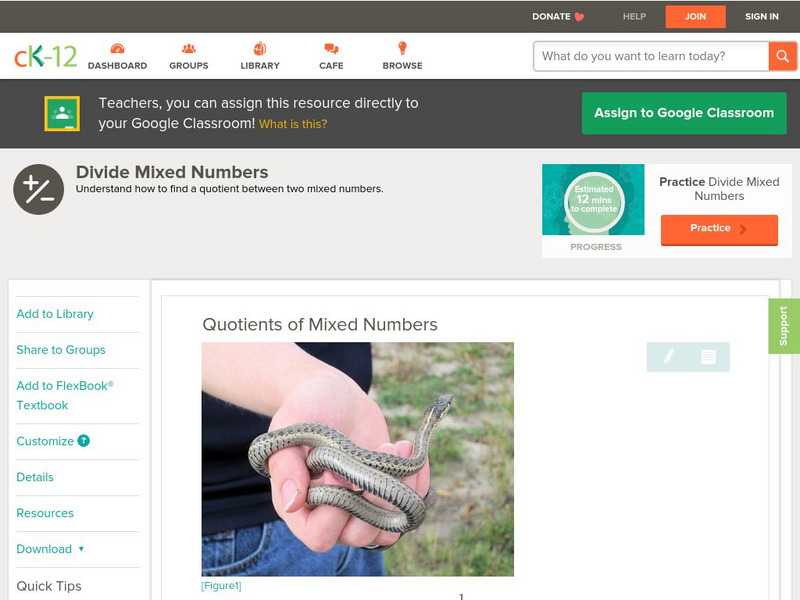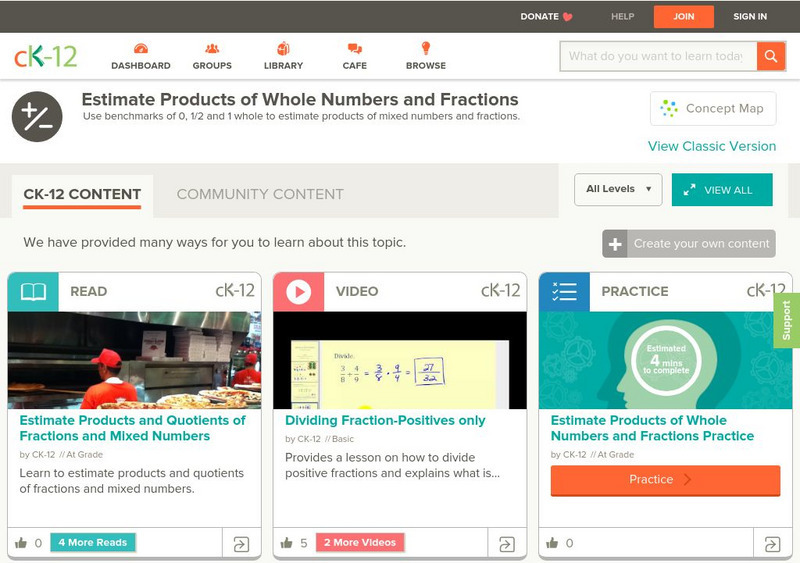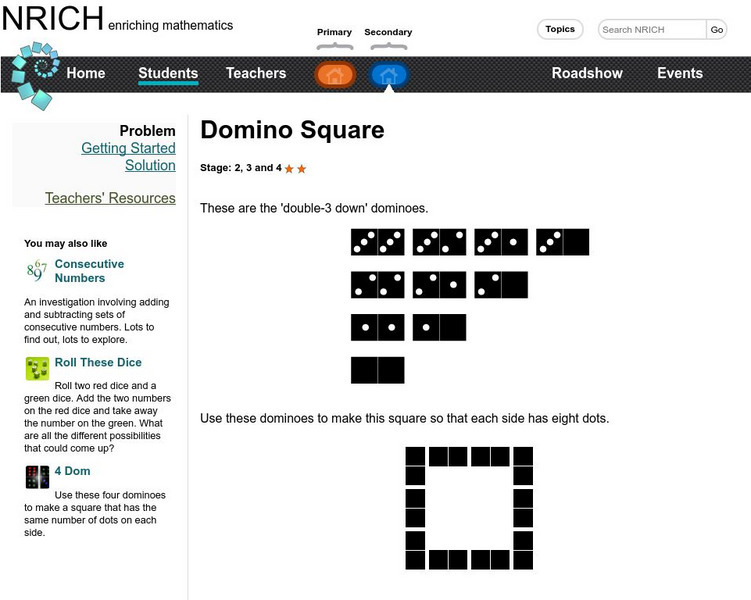Illustrative Mathematics
Illustrative Mathematics: To Multiply or Not to Multiply?
Many real world problems appear similar. Even when children might know what operation to choose when the problem only involves whole numbers, they often are confused with fractions. It is also important for students to know that 18x25 is...
Illustrative Mathematics
Illustrative Mathematics: Making S'mores
The purpose of this instructional task is to motivate a discussion about adding fractions and the meaning of the common denominator. The different parts of the task have learners moving back and forth between the abstract representation...
Illustrative Mathematics
Illustrative Mathematics: Finding Common Denominators to Subtract
Part (a) of this task asks students to use two different denominators to subtract fractions. The purpose of this is to help students realize that any common denominator will work, not just the least common denominator. Part (b) does not...
Illustrative Mathematics
Illustrative Mathematics: How Much Pie?
The purpose of this task is to help learners see the connection between a/b and a/b in a particular concrete example. The relationship between the division problem 3/8 and the fraction 3/8 is actually very subtle. Aligns with 5.NF.B.3.
Illustrative Mathematics
Illustrative Mathematics: 5.nf Standing in Line
The purpose of this task is for students to solve a problem in context that can be solved in different ways, but in particular by dividing a whole number by a unit fraction. Aligns with 6.NS.A.1.
Illustrative Mathematics
Illustrative Mathematics: Painting a Wall
The purpose of this task is for students to find the answer to a question in context that can be represented by fraction multiplication. This task is appropriate for either instruction or assessment depending on how it is used and where...
Illustrative Mathematics
Illustrative Mathematics: 5.nf Banana Pudding
The purpose of this task is to provide learners with a concrete situation they can model by dividing a whole number by a unit fraction. Aligns with 5.NF.B.7.
Illustrative Mathematics
Illustrative Mathematics: 5.nf How Many Marbles?
This task is intended to complement "5.NF How many servings of oatmeal?" and "7.RP Molly's run.'' All three tasks address the division problem 4/13 but from different points of view. Aligns with 5.NF.B.7.b.
Mangahigh
Mangahigh: Number: Multiply With Fractions
This site provides students practice with the concept of fraction multiplication. Students can learn about the topic by completing an interactive tutorial. Students can then take a ten question timed test to practice the skill.
CK-12 Foundation
Ck 12: Arithmetic: Quotients of Mixed Numbers
[Free Registration/Login may be required to access all resource tools.] In this lesson students find the quotient of two mixed numbers by converting to improper fractions and multiplying by a reciprocal. Students examine guided notes,...
CK-12 Foundation
Ck 12: Arithmetic: Subtraction of Fractions
[Free Registration/Login may be required to access all resource tools.] In this lesson students subtract fractions and mixed numbers with like and unlike denominators. Students examine guided notes, review guided practice, watch...
CK-12 Foundation
Ck 12: Arithmetic: Sums of Mixed Numbers
[Free Registration/Login may be required to access all resource tools.] In this lesson students find the sum of mixed numbers by renaming fractions with a common denominator. Students examine guided notes, review guided practice, watch...
CK-12 Foundation
Ck 12: Arithmetic: Products of Three Fractions
[Free Registration/Login may be required to access all resource tools.] In this lesson students find the product of three fractions multiplied together. Students examine guided notes, review guided practice, watch instructional videos...
CK-12 Foundation
Ck 12: Arithmetic: Quotient Estimation With Mixed Numbers/fractions
[Free Registration/Login may be required to access all resource tools.] In this lesson students estimate quotients of fractions and mixed numbers using benchmarks and rounding. Students examine guided notes, review guided practice, watch...
National Council of Teachers of Mathematics
The Math Forum: Multiplying Magic Squares
The math concept of "Magic Squares" is explored here with basic terminology and examples to begin with. Once students have mastered these, the more challenging idea of how to multiply magic squares is introduced. Review materials are...
CK-12 Foundation
Ck 12: Arithmetic: Quotients of Fractions
[Free Registration/Login may be required to access all resource tools.] In this lesson students find the quotient of two fractions by multiplying by the reciprocal. Students examine guided notes, review guided practice, watch...
Crayola
Crayola: Insect Addition Game
Learning how to add two or more numbers? This appealing, child-made board game integrates, math, science, and the visual arts using an Earth-friendly recycled box.
National Council of Teachers of Mathematics
Nctm: Illuminations: Grouping and Grazing
Help the alien spaceship move cows into corrals by counting, adding, and subtracting. This activity helps children learn grouping, tally marks, and place value.
Cyberbee
Adventures of Cyberbee: Add & Subtract (Lesson Plan)
Teacher directed lesson plan that focuses on number operations, particularly addition and subtraction.
Fun Brain
Fun Brain: Guess the Number
Students enter the numbers on the rocks in the correct order to solve the arithmetic problem. Solutions are provided for incorrect answers.
Other
Curious math.com: Math Is an Attitude
This site offers numbers tricks to help multiply and divide large numbers mentally. There are also tricks for powers and roots of numbers.
ClassFlow
Class Flow: Number Theory
[Free Registration/Login Required] This flipchart will help students understand the four basic arithmetic operations. There are activities to give them practice using them to solve problems. Assessment questions are included.
University of Cambridge
University of Cambridge: Nrich: Domino Square
Use your problem solving skills and move the dominoes around on the square so that each side has only eight dots. When you are finished you can check your answer against theirs right at this one page NRich website.













